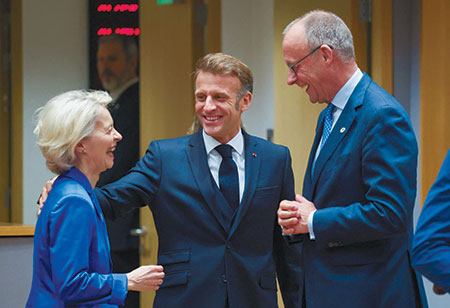
In a dramatic shift that signals a significant realignment in Western foreign policy, planned high-stakes negotiations between US President Donald Trump and Russian President Vladimir Putin in Budapest have been called off. Instead, a renewed focus on escalating pressure tactics is set to dominate, aimed at compelling the Kremlin towards greater compliance. This pivotal decision appears to herald the first synchronized imposition of sanctions by the United States and the European Union since the early days of the current US administration, a move greatly anticipated by allies.
While the White House has remained tight-lipped regarding the sudden pivot from dialogue, observers speculate that the decision stemmed from a comprehensive reassessment of the geopolitical landscape. This review likely incorporated critical insights from figures such as Secretary of State Marco Rubio, alongside fervent urging from key US allies. President Trump’s announcement came immediately following a crucial meeting in Washington with NATO Secretary General Mark Rutte. During this encounter, Rutte presented a meticulously crafted 12-point plan, essentially a European blueprint for the agenda of any prospective US-Russia summit. Central to these proposals was an unequivocal demand for an immediate cessation of hostilities in Ukraine, a precondition Moscow has consistently rejected. Rutte underscored the urgency of an unconditional ceasefire in subsequent interviews, signaling a unified Western stance.
President Trump himself offered a succinct rationale for the cancellation, stating, “I don’t want the meeting to be useless. I don’t want to waste time. So let’s see what comes of it.” This assertive declaration served as a clear harbinger that the era of exploratory talks was being replaced by concerted efforts to alter Moscow’s strategic calculations. The consequential actions followed swiftly, underscoring the new resolve.
Barely days later, on Thursday, October 23, the European Union adopted its 19th package of sanctions against Russia. Notably, this round saw an unprecedented lack of dissent from Slovakia’s Prime Minister Robert Fico and Hungary’s Prime Minister Viktor Orban, who have historically been reluctant to support anti-Russian measures. Orban, in a striking political maneuver, reportedly excused his absence from the EU summit by claiming participation in a “Peace March” rally in Budapest, thereby enabling Prime Minister Fico to cast votes on behalf of both Slovakia and Hungary. While such proxy voting is uncommon in EU summitry, it remains technically permissible, allowing the package to pass with unanimous support.
In parallel, the United States immediately ramped up its own punitive measures. The US Treasury Department unveiled a fresh wave of sanctions targeting Russia, while the Senate Foreign Relations Committee advanced three critical legislative proposals concerning Moscow. These included the potential designation of Russia as a state sponsor of terrorism, sanctions against China for its ongoing defense cooperation with the Russian military-industrial complex, and a mechanism for quarterly disbursements of interest from frozen Russian assets in the US to Ukraine – a measure already implemented by the European Union, where the majority of such sequestered funds reside. Given President Trump’s significant influence over the Republican-led Senate, these initiatives are widely seen as indicative of a coordinated and high-level strategy.
This shift represents a remarkable recalibration of President Trump’s foreign policy towards Russia, marking his first imposition of new sanctions since assuming office, beyond merely extending those inherited from previous administrations. European partners, in particular, expressed profound satisfaction at the evident synchronization of US and EU sanctions, a level of transatlantic coordination reminiscent of the Biden era. The impact of this policy shift was almost immediately palpable, with Spanish Prime Minister Pedro Sánchez announcing Spain’s decision to join the “PURL” program, a collective initiative to procure American weaponry for Ukraine, even before the EU summit commenced, signaling renewed European confidence in American leadership.
Despite the unified front on sanctions, the question of specific military aid remains nuanced. It is currently unclear whether the PURL program will include the procurement of American Tomahawk missiles for Ukraine. President Trump has reportedly informed Ukrainian President Volodymyr Zelensky that the US would not supply these missiles to Kyiv, citing the extensive training period – estimated at six to twelve months – required for their deployment, which he deemed would render them ineffective for Ukraine’s immediate defensive needs. President Zelensky, however, did not view this refusal as definitive. He pointedly reminded his European counterparts that other NATO nations possess long-range missile capabilities, urging, “I call on you to support everything that helps Ukraine gain such capabilities, because it really matters to Russia,” during his address at the EU summit, underscoring Ukraine’s unwavering demand for decisive military support.
